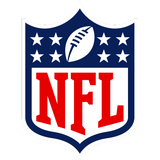
Steelers' Hall of Famer Butler dies
Jack Butler, who helped revolutionize the way cornerbacks played in the NFL during his Hall of Fame career with the Pittsburgh Steelers, died Saturday after a lengthy battle with a staph infection. He was 85.
Butler's son John said his father's heart stopped suddenly Saturday morning. The elder Butler had spent the last several months in the hospital dealing with a staph infection that plagued him since his career ended in 1959.
''It had been a long road,'' John Butler said. ''It wasn't completely out of the blue.''
Unlike Butler's professional career.
The Pittsburgh native played wide receiver at St. Bonaventure and was planning on returning to school to get his master's degree when he received a phone call from Steelers business manager Fran Fogarty in the summer of 1951. To be honest, Butler assumed Fogarty had the wrong number.
''I didn't know anything about professional football,'' Butler said.
It didn't matter. Over the next nine years, Butler became one of the NFL's top defensive backs, a 6-foot-1, 200-pound wrecking ball known for his physical play and uncanny knack for getting to the ball. Butler intercepted 52 passes during his career, including a league-high 10 in 1957. He made the Pro Bowl four times and was chosen first-team All-NFL three times before a knee injury in 1959 ended his career.
Butler remained close to the game after his retirement, becoming a prominent scout who worked closely with the Steelers for over 40 years.
During one stretch from 1969-74, Butler's insight helped Pittsburgh draft nine players that would all precede him in the Hall of Fame, including Terry Bradshaw and Joe Greene. The group became the core of a franchise for the better part of a decade, helping Pittsburgh win four Super Bowls in the span of six years.
''He was an excellent person both on and off the field, and he played an integral role in the BLESTO scouting program and our entire draft process before his retirement,'' Steelers chairman Dan Rooney said. ''His family was very close to the entire Rooney family, and he will be missed.''
Butler served as the backbone of a string of mediocre to middling teams in the 1950s and his bruising style became a precursor to the ''Steel Curtain'' defense that has been the team's hallmark for most of the last 40 years.
He was in his prime in 1959 when a collision with Philadelphia Eagles tight end Pete Retzlaff put an end to his playing days. The details of the play remained vivid more than 50 years later.
''He caught the ball and I was coming over to hit him, to tackle him and before I got to him, he tripped or caught his foot or something,'' Butler said in July, 2012. ''As he was going down, his shoulder hit my (left) knee.''
Butler knew the second he looked down at the smashed joint - which appeared to be at a 90-degree angle with the rest of his leg - he needed to think about what he was going to do with the rest of his life.
''It was just sticking out,'' Butler said. ''I knew I was in a lot of trouble.''
There was no such thing as arthroscopic knee surgery back then and given the severity of the injury, Butler's not sure he could have recovered if the injury happened today. He endured 10 surgeries and eventually had both of his knees replaced, procedures that limited his mobility later in life.
Still, he managed to make it to Canton, Ohio last summer to be inducted into the Hall of Fame after being elected by the senior committee. It was an honor Butler had given up on long ago even as a campaign to get him into the Hall built steam. He was second in NFL history in career interceptions when he retired and still ranks 26th all-time, tied with Champ Bailey among others.
More than a dozen members of his family made the two-hour trip to Canton for the ceremony when the weight of Butler's accomplishments finally seemed to set in.
''If you'd asked him five years, 10 years ago, he'd have said it was no big deal,'' John Butler said Saturday. ''But then when it happened, he was like, `this is a big deal.' When they told him 25,000 players or so had been in the league and you're No. 268, he was like, `Wow, that's pretty good.' He kind of really figured it out.''
Butler didn't have a secret for his transformation from unknown to Hall of Famer. He knew he loved football. And he knew he could get away with the kind of contact today's defensive backs only dream about.
''You could bump'em and push'em and do things,'' Butler said. ''You could grab onto his jersey so he doesn't get far from you. You could hold on a little bit. Now they're all over you. It's hard to do anything today.''
There was no method exactly to Butler's success. He was smart, sure. And he could tell by a receiver's footwork where he was heading. Yet Butler says most of the credit should go to a work ethic and a little bit of naivety. He didn't know what he was doing when the Steelers signed him to a $4,000 contract in 1951.
''I must've been given some talents,'' he said. ''Whatever talents I had, I worked like hell to improve what I had.''










